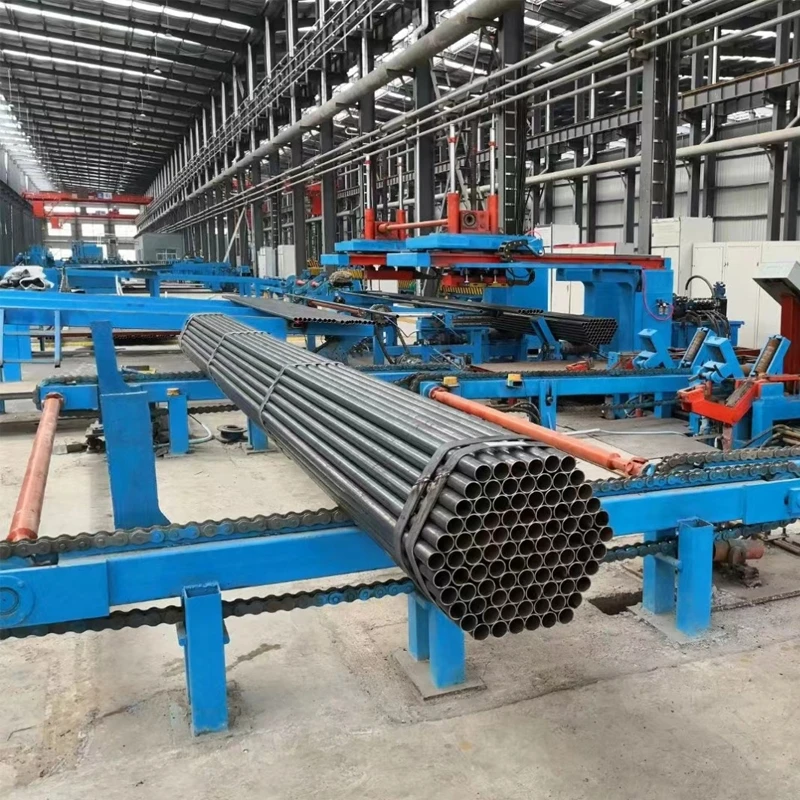Steel Plate Flattening Equipment for Precision Manufacturing and Surface Quality Enhancement Techniques
The Importance of Steel Flattening Machines in Modern Manufacturing
In the landscape of modern manufacturing, the role of machinery is paramount, especially when it comes to processing materials like steel. One of the essential machines in this realm is the steel flattening machine. These machines are crucial in achieving the desired quality and precision in steel production, offering numerous advantages that enhance efficiency and reduce waste.
What is a Steel Flattening Machine?
A steel flattening machine is a specialized piece of equipment designed to flatten steel sheets, plates, or coils that may have been warped, bent, or otherwise deformed during the manufacturing process. The machine applies pressure to the steel, thereby eliminating any irregularities and ensuring a smooth, level surface. This process is vital for various applications, including construction, automotive, and industrial manufacturing, where the integrity of steel components is imperative.
How Steel Flattening Machines Work
The operation of a steel flattening machine typically involves feeding the steel material through a series of rollers that exert controlled pressure. These rollers are engineered to achieve a specific thickness and flatness according to the production specifications. Most machines allow for adjustable settings, enabling operators to customize the flattening process according to the material type, thickness, and required flatness tolerance.
Some advanced steel flattening machines come equipped with digital displays, ensuring accurate measurements and adjustments. Automated features can enhance precision further, enabling operators to maintain consistent quality throughout large production runs.
Benefits of Using Steel Flattening Machines
steel flattening machine

1. Enhanced Quality The primary benefit of using a steel flattening machine is the improved quality of the steel products. A flat surface is essential for proper welding, assembly, and other downstream processes. High-quality flat steel can significantly reduce the risk of defects, leading to fewer reworks and waste.
2. Increased Efficiency By streamlining the flattening process, manufacturers can achieve greater throughput. Steel flattening machines are designed for rapid operation, meaning that companies can process large volumes of material quickly, thus meeting the demands of a fast-paced market.
3. Cost-Effectiveness Investing in a steel flattening machine can yield long-term cost savings. By reducing the amount of waste generated during production and minimizing the need for manual labor in the flattening process, manufacturers can lower their operational costs.
4. Flexibility Modern steel flattening machines are versatile and can handle various steel grades and thicknesses. This flexibility allows manufacturers to adapt to changing production needs and accommodate a wide range of projects without the need for multiple machines.
5. Improved Safety Automation and advanced controls in steel flattening machines can enhance workplace safety. By reducing the manual handling of heavy steel materials and minimizing the risk of injuries associated with traditional manual flattening methods, companies can create a safer environment for their employees.
Conclusion
As industries continue to evolve, the demand for high-quality steel products remains steadfast. Steel flattening machines play a critical role in ensuring that steel sheets and plates meet the stringent standards required in construction, automotive, and various other sectors. The integration of these machines into the manufacturing process not only enhances the quality and efficiency of production but also supports the overall advancement of manufacturing technologies. Investing in modern steel flattening machines is a strategic move for any manufacturer aiming to stay competitive in a rapidly evolving market.
-
High Frequency Straight Seam Welded Pipe Production Line-BzZhou Xinghua Machinery Equipment Manufacturing Co., LTD.|Precision Welding, High EfficiencyNewsJul.30,2025
-
High Frequency Straight Seam Welded Pipe Production Line|BzZhou Xinghua|Precision Welding&EfficiencyNewsJul.30,2025
-
High Frequency Straight Seam Welded Pipe Production Line - BzZhou Xinghua|Precision Engineering&EfficiencyNewsJul.30,2025
-
High-Frequency Straight Seam Welded Pipe Production Line-BzZhou Xinghua Machinery Equipment Manufacturing Co., LTD.NewsJul.30,2025
-
High-Frequency Straight Seam Welded Pipe Production Line-BzZhou Xinghua Machinery Equipment Manufacturing Co., LTD.|Precision Manufacturing, High EfficiencyNewsJul.30,2025
-
High Frequency Straight Seam Welded Pipe Production Line-BzZhou Xinghua Machinery Equipment Manufacturing Co., LTD.|Precision Steel Pipe Manufacturing&Industrial EfficiencyNewsJul.29,2025


